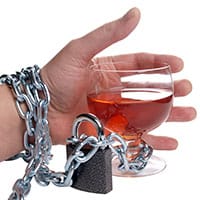The 12-step program has a set number of steps—you guessed it, 12. Yet it is not uncommon to find meeting groups in which many of the members have never worked the steps. They attend meetings, they talk about their inability to control their drinking, and perhaps they even try to be of service to the group. Yet they avoid surrendering to the totality of the steps. This practice is often referred to as “two-stepping.” The member goes from the step one admission of powerlessness to 12th step service and meeting participation. They acknowledge their alcoholism, they show up at meetings, and they help other alcoholics when they can. The cycle is often perforated with slips, stops, and restarts. If they do stay alcohol-free, they take on the classification of “dry drunk.” Their lack of emotional growth and development can hardly be esteemed as sobriety. The newcomer may be tempted to follow suit. If so many members can get by on the two steps of admitting powerlessness and trying to help other drunks, is it really necessary to do the uncomfortable and time-consuming emotional heavy lifting required by all of those middle steps? While admitting you are an alcoholic, attending meetings, and performing service are essential activities for recovery, these do not represent the totality of the program. If you choose to take the path of least resistance in which you simply admit what everyone already knows and manage to show up at a meeting every week, then your recovery will be proportionally limited. You get out of the program what you put into it. When you limit your effort, you limit your reward. How did this practice get started? The literature of Alcoholics Anonymous is abundantly clear and detailed as to how we are to work the steps in order to achieve effective and lasting recovery. If the plan for recovery is so properly laid out, how did it become permissible to excise over 80 percent of the program? One of the blessings and simultaneous curses of the program is that the steps are not mandates or laws. The are suggestions. Though there is abundant evidence that true and lasting recovery from alcoholism happens in the context of a thorough and lifelong working of all 12 steps, this is not a rule or requirement that can be enforced. Our “freedom” to do things any way we please can be a dangerous privilege—especially for prideful addicts who believe that their way is always the best way, even if that way has only gotten us into trouble in the past. We are reluctant to submit to someone else’s guidelines. We think we have an easier, faster, less painful method. Why work 12 steps when you can get by with two? But what if two stepping didn’t actually get you sober and what if there was more to recovery than just getting by? Each of the 12 steps presents a challenge. But with the challenge comes blessing. Each step you work increases the value of your insurance policy against a slip. The steps also have a purposeful order. Though it is tempting to rewrite the program or the sequencing, experience shows that adherence to the steps in the order they are laid out brings the greatest benefit. Though you may feel benevolent in jumping straight into service, you will be of far greater usefulness to your group and to the still suffering alcoholic if you will put the time and effort into a thorough and concentrated working of the steps. Your example is also a benefit to others. When you work the 12 steps thoroughly and completely, you show how recovery is most effectively achieved. When a few key members start to take the easy route and begin to cut corners as they see fit, the lackadaisical approach trickles down into the newer, less experienced members. The inertia impacts the entire group. But when members show that they are putting their best efforts into recovery even when it’s difficult and when they share how they are working the steps, what has worked for them, what they’re learning, and how they’ve been blessed, they set a positive example. Newcomers and veterans alike see their submission to the program, teachability, determination, integrity and character. The program is a series of suggestions, and experience and history show that these suggestions bring about sobriety. Will you work the 12 steps for the good of your own recovery and the group or will you rewrite the program to your preferences?




